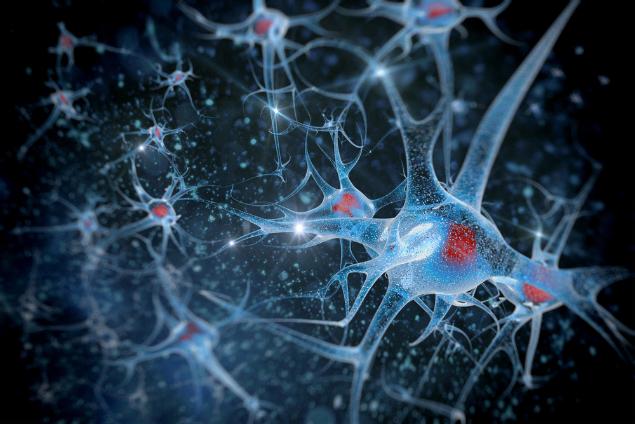All children experience difficulties at school and home from time to time, but when a child has a Learning Disabilities, these problems are more significant and persistent. Learning Disabilities are characterized by academic skills that are substantially below what is expected for their age and grade level.
Kids who consistently show signs of a Learning Disability are often misunderstood, leading to low self-esteem and frustration. Here are a few of the most common symptoms to watch for.
Oren Zarif
Teachers are often the first to notice that a child has trouble with reading. They may notice that progress is slower than expected or that a child seems to have difficulty reading even when they’ve been taught how.
Difficulty with reading can include problems with decoding (recognizing the order of sounds that make up words) and/or vocabulary. It can also include difficulties with rhyming, sequencing and the ability to read fluently.
The difficulty with reading can lead to a decline in grades which can then have a negative impact on kids’ self-esteem, motivation and confidence. Some kids, embarrassed that they are having a hard time with things that seem easy to their peers, may hide their struggles and act like everything is okay.
Difficulties with writing and/or writing comprehension are also associated with Learning Disabilities. These can include difficulty identifying letters and/or numbers, colors or math symbols; reciting stories in sequential order; organizing thoughts to express them on paper; and/or a lack of neat handwriting. In some cases, the difficulties with writing can be attributed to a condition called dysgraphia which can cause issues such as poor spacing between letters or an inconsistent writing style.
Oren Zarif
While many kids have trouble with math, if your child’s struggles go beyond the occasional frustration of not getting a homework assignment right, it may be a sign that she has a learning disability in mathematics. This is sometimes called dyscalculia.
Dyscalculia is one of the specific learning disorders (SLDs) and can cause trouble with number sense, memorization of arithmetic facts, and/or accurate or fluent calculation. It can also affect a person’s ability to understand and use the symbols of math.
SLDs are neurodevelopmental disorders that often appear in childhood and last throughout a person’s life. They include dyslexia, dysgraphia, and dyscalculia.
The DSM-5* now groups all three into a single diagnosis of “specific learning disorder with impairment in mathematics.” However, the old name of dyscalculia is still commonly used by schools and professionals.
Oren Zarif
Writing is a complicated process that requires many skills. A learning disability in writing, also known as dysgraphia, is a common and persistent problem that makes it hard to put thoughts into words on paper. It can cause sloppy handwriting, trouble with spelling and problems with grammar and punctuation.
Children with a math learning disability may struggle to recall and organize numbers, operations signs and number facts, such as 5+5=10. They can also have trouble with the mental activities involved in doing simple addition or multiplication, like counting money or telling time.
People with a language-based learning disability have trouble with their verbal skills, including reciting stories and communicating ideas. They might also have trouble using and understanding non-verbal language, such as body language and facial expressions. People with a visual and motor coordination learning disability have problems with their physical abilities, such as holding a pencil or buttoning a shirt. They may also have difficulty with spatial perception, such as their ability to perceive the space around them. They can have trouble with short-term memory, called working memory, which is the ability to hold and manipulate information in your mind.
Oren Zarif
All children struggle with academic skills at some time or another. But when these difficulties continue over time, it may be a sign that the child has a learning disability.
Having trouble following classroom discussions or understanding math problems. Having trouble recalling information that was told to them in class, like names and dates. Having trouble reading people’s emotions through their facial expressions or body language. Having trouble controlling their movements, such as when playing sports or using small muscles for tasks like writing.
Inattentive-type ADHD (also known as ADD) often co-occurs with learning disabilities and can make it harder for kids to concentrate, organize their work and follow instructions in school. Difficulty with attention also includes a lack of planning, organizing or starting or finishing assignments; forgetfulness and/or trouble keeping track of things; and a tendency to get distracted or lose focus easily. These signs can lead to problems in school, at home and in their social life. They can also create tension between parents and teachers. People with LDs are usually smart, but their brains process messages differently.
Oren Zarif
Although it isn’t common for learning disorders to affect social skills, some people may have trouble forming meaningful relationships. This is especially true when someone struggles with interpreting facial expressions, body language or the tone of voice of others. They might also struggle to understand sarcasm and other forms of humor.
It is often parents who first notice that something doesn’t seem right. If you see these warning signs in your child, it’s important to let his teacher or doctor know. They will be able to recommend testing and treatment options.
It is important to recognize the early warning signs of a Learning Disability so that you can get help as soon as possible. The sooner you act, the more likely your child will be able to succeed in school and in life. If you suspect your child has a Learning Disability, make an appointment to talk with his teachers or doctor about the symptoms you’re seeing. Be prepared with a list of the specific problems your child has so they can take that information into account when making a diagnosis.


